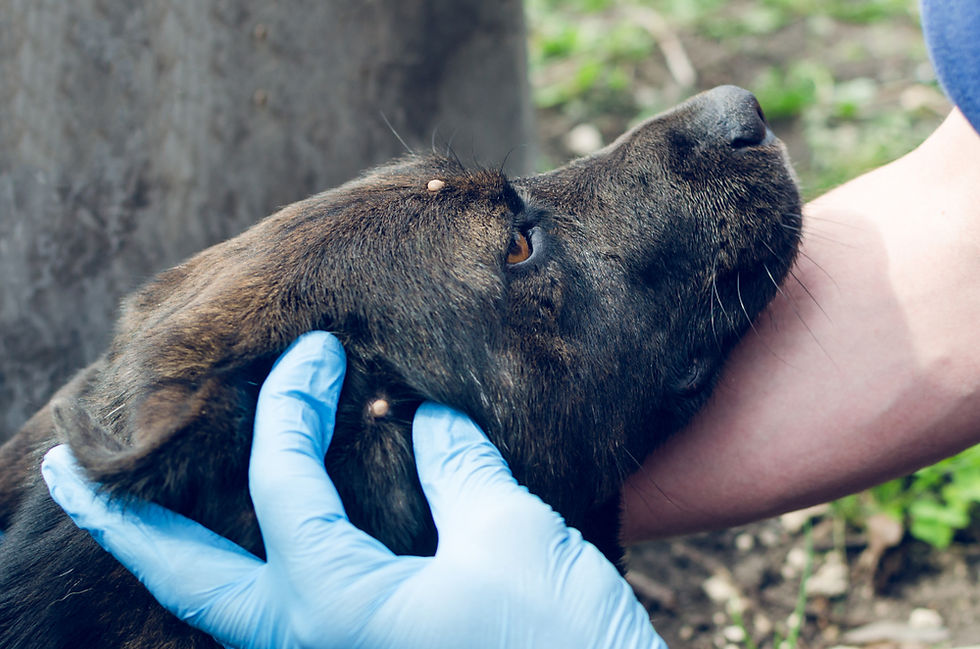Sustainable Ways to Keep Pests at Bay
- Oscar Melchor
- Aug 28
- 4 min read
Pests can be a major nuisance in homes and gardens, causing damage to plants, property, and even health. However, many traditional pest control methods rely on harsh chemicals that can harm the environment, beneficial insects, and even humans. Fortunately, there are sustainable pest solutions that effectively keep pests at bay while protecting the planet. This article explores practical, eco-friendly strategies to manage pests sustainably.
Understanding Sustainable Pest Solutions
Sustainable pest solutions focus on long-term pest management by using natural, non-toxic methods that minimize environmental impact. These approaches emphasize prevention, habitat management, and biological controls rather than relying solely on chemical pesticides.
Some key principles of sustainable pest control include:
Prevention: Reducing pest access to food, water, and shelter.
Monitoring: Regularly checking for pest presence to catch problems early.
Biological control: Encouraging natural predators like ladybugs and birds.
Cultural practices: Crop rotation, companion planting, and soil health improvement.
Mechanical control: Physical barriers, traps, and manual removal.
By integrating these methods, you can create a balanced ecosystem that naturally limits pest populations.

Close-up view of garden with natural pest control plants
Practical Sustainable Pest Solutions for Your Home and Garden
Implementing sustainable pest solutions can be straightforward and cost-effective. Here are some actionable recommendations:
1. Use Companion Planting
Certain plants naturally repel pests or attract beneficial insects. For example:
Marigolds deter aphids and nematodes.
Basil repels mosquitoes and flies.
Nasturtiums attract aphids away from other plants.
Planting these alongside vegetables and flowers can reduce pest damage without chemicals.
2. Encourage Beneficial Insects
Ladybugs, lacewings, and predatory wasps feed on common pests like aphids and caterpillars. To attract them:
Plant nectar-rich flowers such as dill, fennel, and yarrow.
Avoid broad-spectrum insecticides that kill beneficial insects.
Provide shelter with small piles of leaves or brush.
3. Create Physical Barriers
Use row covers, netting, or collars around plants to prevent pests from reaching them. For example:
Floating row covers protect crops from flying insects.
Copper tape can deter slugs and snails.
Sticky traps catch flying pests before they lay eggs.
4. Maintain Healthy Soil
Healthy soil supports strong plants that resist pests better. Improve soil by:
Adding organic compost.
Practicing crop rotation to prevent pest buildup.
Avoiding over-fertilization, which can attract pests.
5. Use Natural Repellents and Traps
Natural substances like neem oil, garlic spray, and diatomaceous earth can deter or kill pests without harming the environment. Homemade traps using sugar water or vinegar can catch flies and ants.
6. Manage Water Wisely
Standing water attracts mosquitoes and other pests. Fix leaks, remove containers that collect water, and use drip irrigation to reduce excess moisture.

Eye-level view of garden bed with companion plants and natural pest barriers
What is the Most Environmentally Friendly Method for Controlling Pests?
The most environmentally friendly pest control method is Integrated Pest Management (IPM). IPM combines multiple sustainable strategies to manage pests effectively with minimal environmental impact. It involves:
Monitoring pest populations to determine if and when control is needed.
Setting action thresholds to avoid unnecessary interventions.
Using cultural, mechanical, and biological controls as first options.
Applying chemical controls only as a last resort, and choosing the least toxic options.
IPM is adaptable to different environments and pest problems, making it a cornerstone of sustainable pest solutions.
For example, a gardener practicing IPM might:
Regularly inspect plants for early signs of pests.
Introduce ladybugs to control aphids.
Use row covers to protect seedlings.
Apply neem oil only if pest levels exceed a certain threshold.
This approach reduces chemical use, protects beneficial organisms, and promotes long-term pest control.

High angle view of integrated pest management garden with diverse plants
Additional Tips for Sustainable Pest Management
Beyond the core methods, consider these tips to enhance your sustainable pest control efforts:
Keep your garden clean: Remove dead plants and debris where pests can hide.
Rotate crops annually: This disrupts pest life cycles.
Choose pest-resistant plant varieties: Many seeds and plants are bred for natural resistance.
Use mulch: Mulching suppresses weeds and maintains soil moisture, reducing stress on plants.
Educate yourself: Learn about local pests and their natural predators.
If you are dealing with specific pests like deer, consider using eco-friendly pest control products designed to repel them without harmful chemicals.
Embracing Sustainable Pest Solutions for a Healthier Environment
Adopting sustainable pest solutions benefits not only your garden or home but also the broader environment. By reducing reliance on chemical pesticides, you protect pollinators, wildlife, and water quality. Sustainable pest management also promotes biodiversity and soil health, creating a resilient ecosystem.
Whether you are a homeowner, gardener, or farmer, integrating these eco-conscious practices can lead to healthier plants and a safer environment. Start small by implementing one or two strategies and gradually build a comprehensive pest management plan that works for your space.
Sustainable pest solutions are a win-win - effective pest control that respects nature and supports long-term ecological balance. Embrace these methods today and enjoy a thriving, pest-resilient environment.






Comments